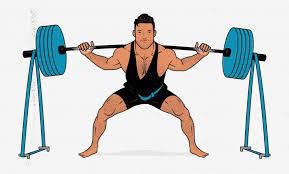When it comes to strength training, achieving consistent progress can be challenging. Plateaus and sticking points within specific exercises can hinder your efforts to build strength and power. That’s where accommodating resistance, particularly using bands, comes into play. In this article, we’ll explore how bands can be employed as accommodating resistance in the gym, a technique that can take your workouts to the next level.
Accommodating resistance is a training concept that involves altering the resistance throughout an exercise’s range of motion to match your strength curve. The goal is to make the exercise harder in the positions where you’re strongest and easier in the positions where you’re weakest. This approach helps optimize muscle engagement, increase muscle tension, and promote continuous strength gains. Bands offer a dynamic form of accommodating resistance that complements traditional free weights, such as barbells and dumbbells. Here are some key benefits of using bands in your workouts:
- Enhanced Muscle Activation: Bands provide a variable resistance, which means that as you lift or push through the exercise, the resistance increases as you move away from the starting position. This forces your muscles to work harder and activates more muscle fibers during each repetition.
- Overcoming Weak Points: Bands target the sticking points in your lifts, the moments in the range of motion where you tend to struggle the most. By accommodating resistance, you can strengthen those weak areas, which, in turn, will help you lift heavier weights when you return to traditional free weights.
- Increased Time Under Tension: Accommodating resistance extends the time under tension, a key factor in muscle growth. This can lead to greater hypertrophy and improved muscle endurance.
- Enjoyment: Using bands is a great way to break up the monotony of a lift, for competitive athletes with high training ages, sometimes they need to try something new or fresh to keep their enjoyment and drive up during their workouts.
A 2014 study by Ataee, Koozehchian, & Kreider, had a deeper dive into whether completing accommodating exercises using bands and chains were more effective than constant resistance exercises. The study had the 40 total participants separated into the two groups, and completed a four-week training protocol, where the training was the same, except for the use of accommodating resistance. There were a few key findings from this study:
- Both groups experienced significant improvements in maximal strength and power.
- The accommodating resistance group showed greater improvements in power compared to the constant resistance group.
- Both groups had similar gains in maximal strength.
- Accommodating resistance training appears to be more effective in enhancing power in trained athletes compared to constant resistance training.
At Vision Sports Science, within our Athlete Development Program we utilise accommodating resistance for the main purpose of improving maximal power in our athletes in their specific pre-season prep, or in-season. Using compound lifts such as TB deadlifts, BB squats and bench press, we can effectively add bands to improve their intent and power adaptations. An easy rule of thumb to follow is that the band should not exceed more than 20% of your BW in resistance. This is because to effectively target improvements in power, maintaining a high speed of movement and intent is critical. If you use a band that has too much resistance, you won’t be able to move during the concentric phase of the lift as fast as you need to chase improved power adaptations.
Using bands as accommodating resistance in your workouts is a great option for those looking to break through strength plateaus and achieve consistent improvements in their lifts. If you are after some additional guidance, feel free to get in contact with the team!
References:
Ataee, J., Koozehchian, M., Kreider, R., Zuo, L. (2014). Effectiveness of accommodation and constant resistance training on maximal strength and power in trained athletes. The Open Access journal for Life & Environment research. 2, 441.




